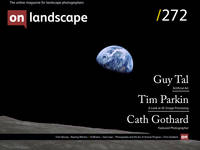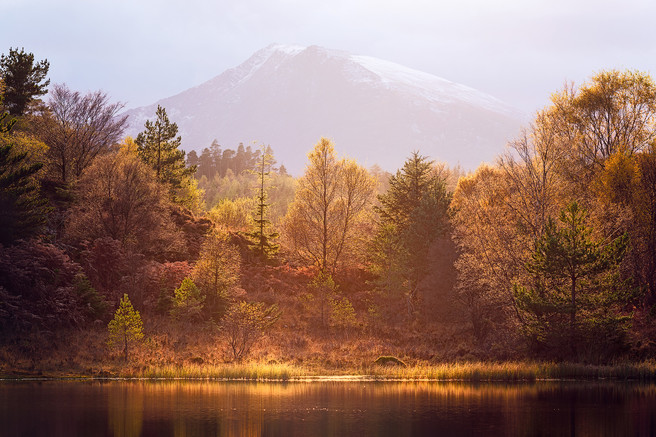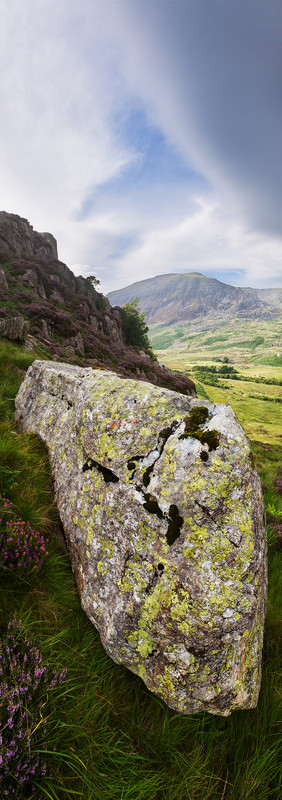How did we get from there to here?

Chris Goddard
Chris Goddard is a keen amateur landscape photographer from south Wales. Between raising a family and a full time job he enjoys making images of Britain’s beautiful landscape. His website can be found at
I am sure the next step will be the electronic image, and I hope I shall live to see it. I trust that the creative eye will continue to function, whatever technological innovations may develop.~ Ansel Adams
I feel very lucky to live in a time and place where I have consistent access to the necessities of life. I do not have to spend most of my time and energy trying to secure clean water, nutritious food, shelter, clothing, or an education as we had to in the past. I find it all too easy to take our modern technological conveniences for granted and forget that it is because of these things that I have the extra time and energy to roam freely with something like a digital camera. With this piece of kit, coupled with the means to travel long distances easily, I can pursue my interests as a photographer across Wales’ beautiful landscape and be on many of the summits in the south within a couple of hours of waking up.
Consider the effort required by the earliest landscape photographers to achieve something similar 150 years ago. Their equipment would have been unreliable, cumbersome and difficult to use. You would have needed lots of different skills to fix the available light onto the surface of the film, which, back then were in their infancy and hard to acquire. They may have even needed a mobile lab – a horse drawn cart - to complete their photographs in situ, not to mention the chemicals required to fix an image, the lack of roads and the quality of the ones that existed. And accuracy was a word that wasn't usually associated with mapping. You would have needed lots of time and lots of money to be a landscape photographer in the nineteenth century, you probably needed several assistants too.
Now, the marginal cost of a digital image is close to zero, effectively the cost of the electricity to charge the battery for your camera. Cars are reliable enough to make significant trips away a feasible and regular thing to do, and perfectly good maps are available on every mobile phone (which are in themselves powerful computers). I have a very good single person tent, durable, warm clothing, and I can filter my own water if I run out on the hills. I am not trying to say that contemporary photography is a walk in the park, it can be very difficult, and it is not without its risks, but compared to what those early photographers had to grapple with, I would say we have it pretty good.
How did we get from there to here? Let us take two great photographers of the early to mid 20th century: Ansel Adams and Eliot Porter. These two were experts at pushing the boundaries of possibility with their approaches to the craft of photography. They were passionate, insightful, pioneering and skilled. However, in addition to those fine qualities, they were also the lucky recipients of certain technologies that became available during their time. This allowed them to discover new opportunities, opportunities that were not there before because the appropriate technologies were not in place. They realised what was possible through the novel combination of the technologies that existed during their time.
Imagine leaping from the ability to make fire from sticks and kindling straight to the rocket ship. This is such a monumental leap that it cannot be taken seriously. The gap between discovering fire and using the combustion of refined fuels to send objects into space against Earth’s gravity is massive. So many discoveries are required to go from one to the other, making it an unfeasible prospect to achieve a leap like this without inventing a whole lot of stuff first. At a minimum, you would need time, extensive networks of people, writing, institutionalised science and maths, communications, computer technology and a whole host of other things before something like leaving earth is even considered a remote possibility.
The cooking of food, keeping warm in the cold, protection against predators and the lighting of dark spaces are natural progressions after the discovery of how to make fire. These are the ideas that are closest and easiest to find out; they are the logical, adjacent steps, and indeed the evidence in the historical record bares this out across different hominid species going back 100,000’s of years. People cannot help but share their ideas and we are excellent copiers, so innovation speeds up considerably when people settled, formed towns and cities and established connections between them.
The idea that any given moment has within it a realm of possibility that makes certain discoveries much more likely is what the author Steven Johnson calls ‘the adjacent possible’. By that, Johnson means that ideas tend to come naturally, almost in a linear fashion, next to one another. It is much easier to make the adjacent step from, say, idea ‘c’ to idea ‘d’ once ideas ‘a’ and ‘b’ have already been established. To go from ‘a’ to ‘d’ is extremely unlikely, the ideas are not close enough to become apparent to people at the time and, therefore, not likely to occur. He says that ‘great leaps beyond the adjacent possible are rare and doomed to be short term failures if the environment is simply not yet ready for them’.
If you follow the process of small logical change from one idea to the next for long enough, you end up with ever increasing complexity. Adams and Porter were alive when the development of key technologies existed, like reliable portable photography, the combustion engine, the plane, road networks and long-distance communications. These are the ideas and the means through which the wilderness could be accessed by these two photographers for the purposes of making their landscape photographs. Also, photography itself changed rapidly too, film was well established in Adams’ time, cameras and lenses became more reliable and less cumbersome; colour film was also beginning to emerge, of which both Adams and Porter were early adopters. These technological convergences allowed Ansel Adams to explore north America’s vast national parks, as can be seen in his beautiful black and whites, and Eliot Porter to photograph breeding birds up close and visit some of the world’s most interesting and remote places like - Arizona, Iceland and the Galapagos.
With the right culture - one that institutionalises reason and constantly updates and questions itself accordingly - you end up with exponential growth. A quick look at the internet, and you will see the effects of exponential growth patterns everywhere. Millions of pictures covering every continent on Earth are shared across the internet every day. We send robots to the surface of Mars and the Moon, and we photograph the stars, nebula, and the Milky Way in remarkable detail. Of course, looking at big things far away is not the only direction we go in, microscopic organisms and their constituent parts are also visible to us now, the likes of which were very difficult to view just a few decades ago.
Several images in this book were made using a small but powerful drone. Drone technology is a recent development in photography, it is having a huge effect with its potential to explore new horizons allowing access to areas that were out of reach by anyone without a helicopter, wings, or a jet pack! It is just pure luck that I live in a time where drones exist, I did not invent them. I am the lucky recipient of this technology, and it has been made possible by many adjacent technological ideas, such as rocket powered spacecraft, GPS satellites, the micro-chip, very small digital cameras, electrical storage and advances in aerospace engineering. It is likely that drones would not exist if any one of those adjacent ideas were not in place first. I have the scientists and engineers who developed each of these technologies, and of-course chance timing, to thank for the fact that I have a drone.
What did I do before drones came along? Well, I walked up mountains and lived within the two-meter maximum height of my tripod to get a different perspective, like most photographers. It will be interesting to see what offshoots come out of such a powerful technology. What ideas come naturally after the creation of something like a drone? Surely it shouldn't be too difficult to scale it up and get the flying vehicles that were popularised in 20th century science fiction, who knows?







